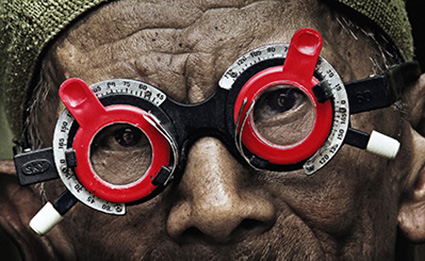
WASHINGTON (ETAN/Pacific Media Watch): The East Timor and Indonesia Action Network (ETAN) has called for action over what it describes United States support for mass violence and genocide in Indonesia.
The massacre of up to 1 million communists, leftists, ethnic Chinese, and others in Indonesia in 1965-1967 is a foundational event in modern Indonesian political history, but it remains mostly a footnote for most in the United States and elsewhere, says ETAN.
The documentary THE ACT OF KILLING shocked audiences as perpetrators of the mass murder reenacted their violence. The film has fueled a debate within Indonesia and drawn attention internationally to events unknown to many. Events that the US facilitated and cheered at the time.
THE LOOK OF SILENCE, a companion film to THE ACT OF KILLING will soon be showing in US theatres - and it is being screened at the NZ International Film Festival in Auckland this month.
It follows the investigation by Adi Rukun into the murder of his older brother who was killed during the violence.
These powerful films tell us much about Indonesia today as they do about the past. However, any evaluation of the events of 1965-1967 must include a discussion of the role of Western powers in the violence, especially the United States.
The East Timor and Indonesia Action Network (ETAN) continues to call for accountability for those in the West who encouraged and assisted in the mass violence in Indonesia. The full truth must come out and the US should declassify all files related to Suharto's U.S.-backed seizure of power and the murderous events which followed.
ETAN has prepared a background piece on the events and aftermath of Suharto's brutal seizure of power, where we focus on the US role and responsibility.
Read Breaking the Silence: The US and Indonesia's Mass Violence.
For more information see: www.etan.org
About THE LOOK OF SILENCE:
Oppenheimer’s powerful companion piece to the Oscar-nominated The Act of Killing. Through a family that lost their eldest son, the film explores one of the 20th century’s deadliest atrocities, still largely hidden after 50 yearsIndonesia’s 1965 army-led purge and killing of as many as one million people. The family discovers years later (from Oppenheimer’s footage) who killed their son and how, and they must confront how privileged, dangerous, and close at hand the killers remain. The younger son, an optometrist named Adi, breaks the half-century of fearful silence with an act the film calls “unimaginable in a society where the murderers remain in power.” While testing the eyesight of the men who killed his brother, Adi confronts them. He challenges them to accept responsibility for their violence. Oppenheimer writes that the film depicts “a silence born of terror,” and “the necessity of breaking that silence, but also … the trauma that comes when that silence is broken." More information about the film can be found here: http://thelookofsilence.com/
About THE ACT OF KILLING:
In The Act of Killing, directed by Joshua Oppenheimer and executive produced by Errol Morris and Werner Herzog, the filmmakers expose a corrupt regime that celebrates death squad leaders as heroes.
When the Indonesian government was overthrown in 1965, small-time gangster Anwar Congo and his friends went from selling movie tickets on the black market to leading death squads in the mass murder of over a million opponents of the new military dictatorship. Anwar boasts of killing hundreds with his own hands, but he's enjoyed impunity ever since, and has been celebrated by the Indonesian government as a national hero. When approached to make a film about their role in the genocide, Anwar and his friends eagerly complybut their idea of being in a movie is not to provide reflective testimony. Instead, they re-create their real-life killings as they dance their way through musical sequences, twist arms in film noir gangster scenes, and gallop across prairies as Western cowboys. Through this filmmaking process, the moral reality of the act of killing begins to haunt Anwar and his friends with varying degrees of acknowledgment, justification and denial. More information about the film can be found here: http://actofkilling.com/.
The Look of Silence at the NZ International Film Festival
This work is licensed under a Creative Commons Attribution-NonCommercial 3.0 New Zealand Licence.




